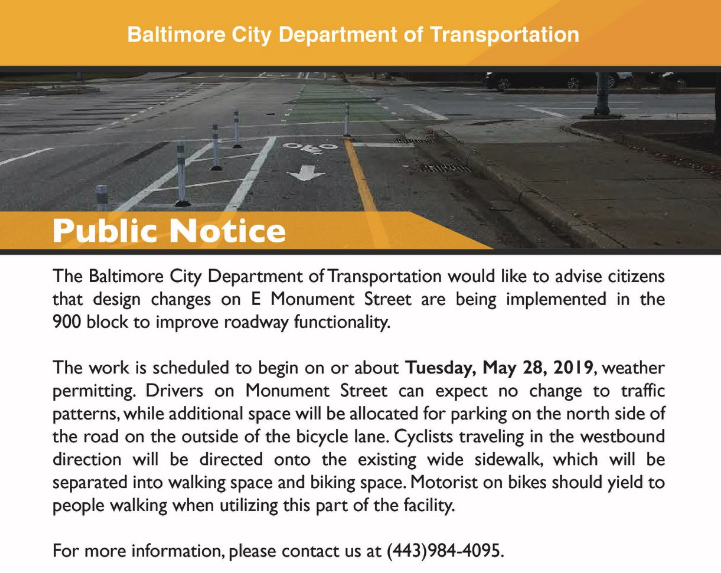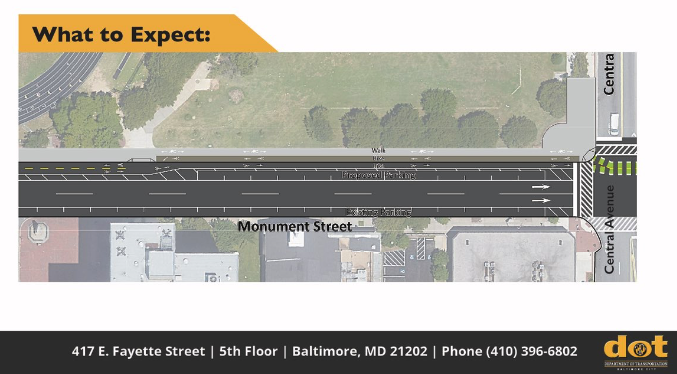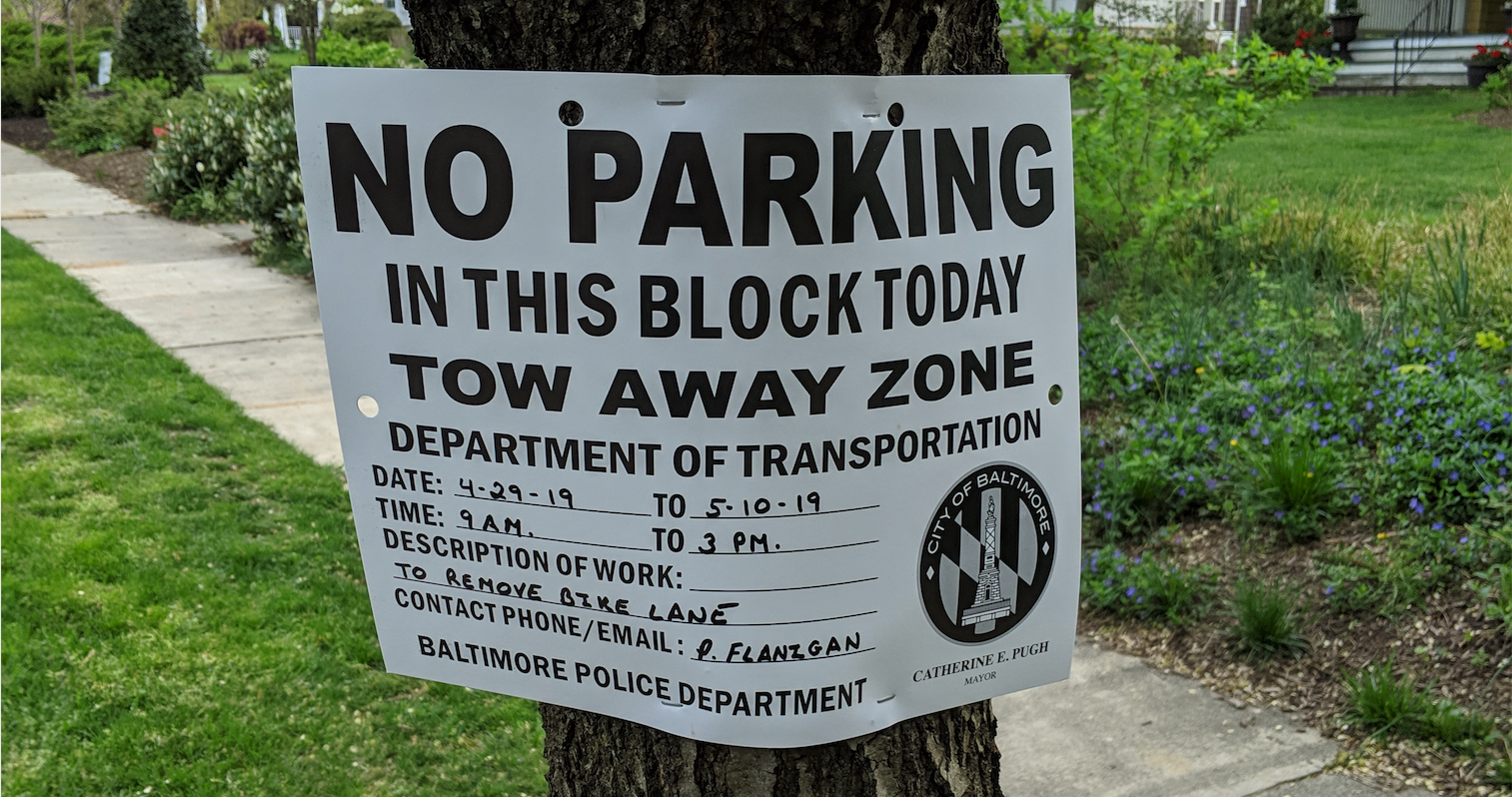Beginning May 28th, Baltimore City Department of Transportation will remove portions of the newly installed two-way protected bike lane on Monument Street between Aisquith Street and Central Avenue to restore 13 parking spaces.
People riding bikes eastbound will continue to use a one-way separated bike lane in the street. People riding bikes westbound will be directed to use the adjacent sidewalk, which will be marked with both bike and pedestrian symbols.
Since email is down, you can contact the Mayor’s office to express your frustration with their continued removal of safe, all-ages bike infrastructure by calling 410-396-4900.
This change is occurring because of parking complaints from some people that work on that block. Baltimore City Department of Transportation proposed several parking alternatives, including a recently implemented road diet that allowed Sunday parking in the travel lane next to the bike lane and free off-street parking for churchgoers in a city-owned adjacent surface parking lot. These alternatives were rejected.
We have been asking to meet with the city to provide input on how this facility can work for everyone that uses that street. We’ve brought it up and offered assistance at every Mayor’s Bicycle Advisory Commission meeting over the past year. But today we were notified of this unacceptable “solution” at the same time as everyone else.
So where do we go from here? In addition to making the bike lanes on Roland Avenue and now Monument street less safe, the city’s actions are pitting residents who want to ride a bike safely against everyone. It’s irresponsible.
We were clear when we worked to pass the Complete Streets ordinance that three major things have to change: we must stop designing streets that put anyone not driving a car at risk, we must make investments in road safety in the neighborhoods that are consistently underserved, and we must reimagine the community input process so that it is equitable, inclusive, and educational. The community input process should bring people together, not create these impossible divides. The city does not need to wait a year to change course. They could start making this better for everyone today.
We are angry. These past few weeks have taken a toll on everyone trying to get stuff done in the city--bike lanes included. And right now we are weighing our options, but we know we cannot continue to play into this fallacy city leadership has created. Making a street safer is not a fight. It’s an imperative.
Last week many of our supporters gathered to learn about our new strategic plan. We drank some beers, celebrated our wins, and talked about the future. We shared this quote:
“You lose a lot, but you have to play to win. But it’s fine, because you put friction in the system, you give people power over what’s happening in their neighborhoods and hopefully you eventually win.” - Paula Segal, attorney, Urban Justice Center
This is hard work. But it’s the right thing to do. And it may not be tomorrow, but eventually we will win.






